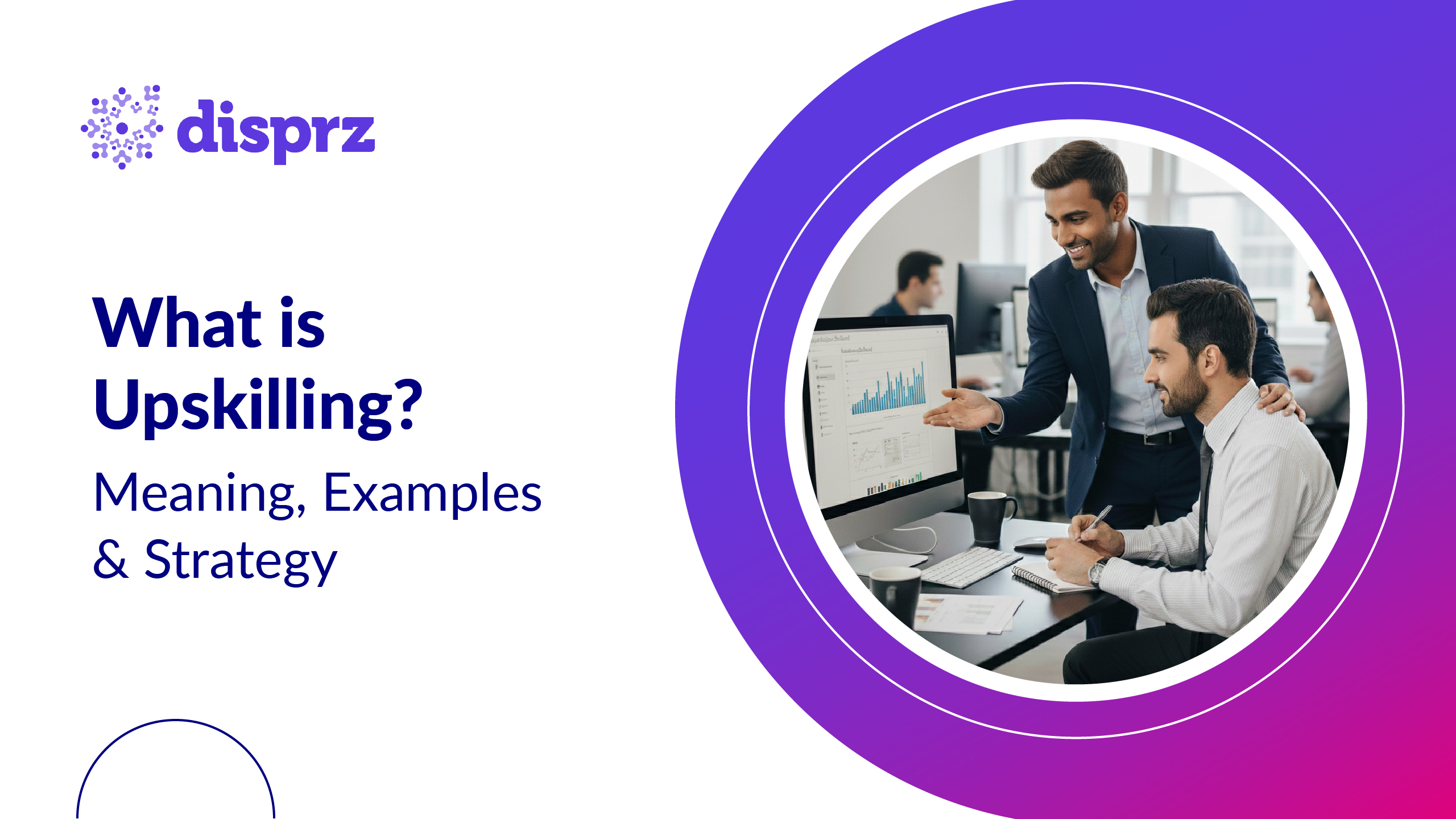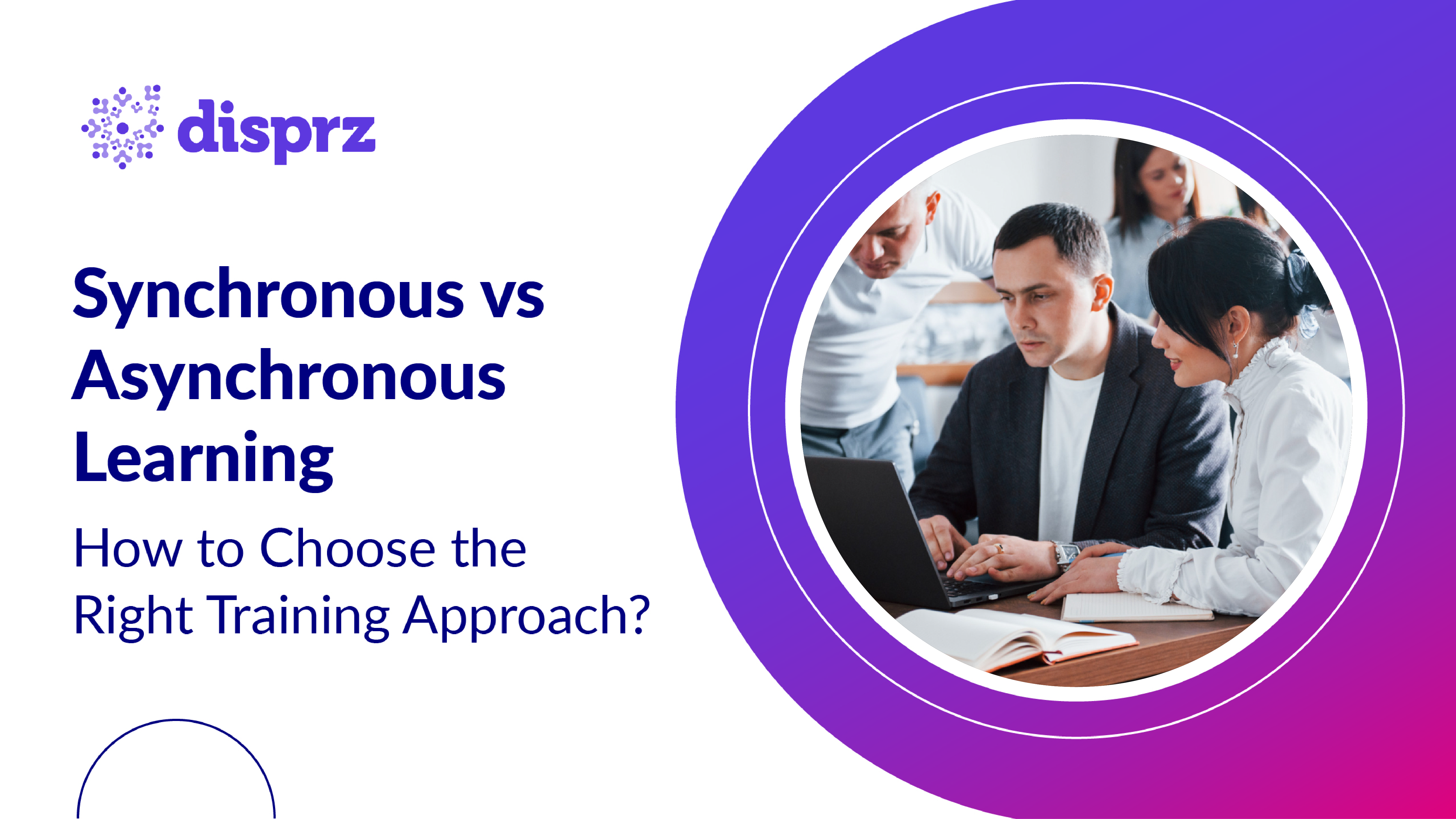In today's competitive landscape, fostering an efficient workforce requires proactive efforts from organizations. To retain talent, it's crucial to offer growth and development opportunities, as evidenced by this year’s LinkedIn report, which found that about 40% of organizations have mature career development initiatives yielding positive business results. We explore the top trends in corporate training and development for 2024-25, emphasizing the importance of leveraging emerging techniques to meet evolving employee needs.
With a focus on enhancing learning experiences, we delve into strategies that will shape the future of employee training and development for the next decade.
What is an Employee Training Platform?
An employee training platform is a digital system or software designed to deliver, manage, and track employee training programs within an organization.
These platforms offer a range of features and tools to facilitate the learning and development (L&D) of employees, helping organizations enhance their workforce's skills, knowledge, and performance. Key components of an employee training platform typically include
Course Management
Enables the creation, organization, and distribution of training content such as courses, modules, and learning paths.
Content Delivery
Provides various formats for training materials, including videos, eLearning modules, webinars, documents, and interactive simulations.
Tracking and Reporting
Monitors employee progress, completion rates, and performance metrics, offering detailed reports and analytics for managers and administrators.
Assessment and Testing
Includes tools for quizzes, exams, and assessments to evaluate employee understanding and retention of the training material.
Certification and Compliance
Manages certification programs and ensures compliance with industry standards and regulations by tracking required training and certifications.
Interactive Features
Facilitates engagement through discussion forums, social learning, gamification, and collaborative tools.
Integration
Integrates with other HR and management systems to streamline data flow and improve efficiency.
Key Features of Employee Training Platforms
Robust Reporting
Quantifying employee knowledge and performance is challenging yet essential for identifying gaps and aligning training with outcomes. Utilize learning management system (LMS) metrics to cover individual and team performance, employing data visualizations and automated reports for easy evaluation.
Accessibility
Ensure your employee training software provides easy access to training materials anytime. This prevents knowledge loss and supports continuous learning. Include supplemental materials like a microlearning repository for quick skill refreshers on mobile devices.
Feedback System
Ensure employees enjoy the online training program by using training software with built-in feedback systems. These systems collect data through surveys and present it in charts and graphs, helping identify pain points. This feedback ensures the program's effectiveness and resourceworthiness.
Personalization Features
Your employee training software should offer personalized training paths and customizable course maps. This allows team members to focus on their specific strengths, gaps, and job requirements. Personalized training enhances engagement and maximizes your eLearning return on investment.
Brand Integration
Ensure your training software offers full brand integration and customization, allowing you to add logos and adjust the color scheme, enhancing accessibility, engagement, and knowledge across roles.
Benefits of Employee Training Platforms

Reduction of Employee Turnover
Employee training reduces turnover rates, helping companies save on hiring and training costs. Offering professional development opportunities retains team members effectively.
Improve Employee Engagement
Employee training boosts engagement and retention by providing growth opportunities and making employees more motivated and engaged. It helps them acquire new skills and advance their careers, enhancing productivity and reducing turnover, leading to increased company profits and a more committed workforce.
L&D expert, Marie-Louise Ek, Senior Director Hr, PepsiCo, UAE, shares her views on making learning a strategic pillar for retaining, engaging, and promoting employees.
“At PepsiCo, learning is the key fundamental building block to upskill employees.”
Check out the video to find out how PepsiCo delivers consistent learning experiences across its organization to help employees grow and advance in their careers.
Increase Productivity
Employee training boosts productivity by leveraging technology like AI and intelligent scheduling apps. It also enhances soft skills such as time management and delegation, streamlining processes, and reducing time waste.
Improve Team Functionality
Employee training fosters teamwork by uniting individuals with diverse backgrounds around shared goals. It enhances collaboration and ensures all team members work towards common objectives, leading to team success.
Latest Trends of Employee Training Platforms in 2025

Artificial Intelligence (AI)
AI-driven solutions revolutionize industries through automation and personalization, analyzing data, measuring ROI, and tailoring training plans for an enhanced learning experience. Learn how AIA Insurance leveraged Disprz's AI-powered platform to boost sales performance through effective learning strategies.
Personalized Training
Personalized training programs customized to individual needs boost productivity and efficiency by setting targeted objectives and allowing employees to set personal goals. Despite being time-consuming, this approach effectively enhances skills and addresses strengths and weaknesses.
Need-based Training
Self-learning courses let employees choose their own training. Instead of leaving them to find resources, L&D teams can survey desired skills and create customized workshops or online modules. Continuous, customized learning helps employees acquire and apply new skills at work.
Augmented Reality
Augmented reality (AR) offers an immersive learning experience that enhances engagement more than regular training, despite its cost. It aids industries like healthcare, sales, and architecture by offering in-depth product understanding through 3D visuals on mobile screens.
Top 5 Ways to Track Employee Training in 2025
To effectively monitor employee training measurement, aligning your tracking methods with your objectives and available tools is essential. In certain situations, a straightforward survey using free software may suffice, while other cases may necessitate a detailed analysis of skills facilitated by a learning management system.
Below are key approaches for how to track employee training effectiveness:
1) Learning Analytics Data
This quantitative information is gathered during and after training sessions, including enrollment figures, attendance, completion rates, and time spent on courses. Analyzing this data allows you to assess engagement levels, attrition rates, and timely completion of modules, providing a broad view of your training programs’ effectiveness, especially for compliance tracking.
2) Before-and-After Training Evaluations
You establish a baseline and measure improvement by administering tests before and after training. This method identifies gaps in knowledge and evaluates course effectiveness, making it ideal for skill development and certification programs. Additionally, it helps trainers tailor future sessions based on individual or group performance trends.
3) Course Reviews
Gathering feedback from participants about their training experience is crucial. Encourage open-ended responses to gain in-depth insights. Various tools can be used to create interactive assessments and gather valuable feedback on the course content, helping to identify areas for improvement. Consistently refining the training approach based on this feedback ensures continuous learning effectiveness.
4) Workplace Performance Assessment
This method tracks how employees apply their training in real-world scenarios by analyzing relevant KPIs. Informal feedback from peers and supervisors can provide a well-rounded assessment of the training's effectiveness, often using a 360-degree feedback approach. Regular evaluations over time can further gauge long-term retention and practical application of the skills acquired.
5) Supervisor Reports
Supervisors play a crucial role in observing employee behavior post-training. Their documentation on how effectively employees apply learned concepts provides essential insights for improving training initiatives and addressing areas needing further support.
Best Practices for Implementing an Employee Training Platform
In today's competitive landscape, effective employee training is crucial for business growth. Here, we explore strategies for successful LMS implementation and user engagement.

Manage Expectations
Set realistic goals for your LMS, clarifying its purpose and expected outcomes. Define measurable parameters for ROI to justify the investment.
Prioritize Content Curation
Create engaging and effective training content to maximize the LMS's impact. Invest in quality content creation to enhance learning experiences.
Cleanse Your Data
Ensure data accuracy and quality before integrating with the LMS to avoid issues and maintain data integrity.
Set up an LMS Team
Assign dedicated champions from each department to drive LMS adoption and success, fostering a collaborative approach.
Plan Training
Communicate the benefits of the LMS to employees and plan comprehensive training sessions to facilitate smooth adoption.
Implement Phase-wise
Roll out the LMS gradually, focusing on specific functions or employee groups to analyze and improve implementation effectiveness.
Incentivize Usage
Encourage LMS engagement by offering incentives such as gamification rewards and recognition for active participation.
Involve the Line Manager
Engage managers in monitoring employee progress and compliance, leveraging their influence for better adoption.
Review
Regularly evaluate employee performance against set parameters and adjust strategies for continuous improvement.
Continuous Improvement
Keep the LMS content updated and relevant to foster a culture of continuous learning and skill development within the organization.
How to Choose the Best Employee Training Platforms in 2025
LMS streamlines learning processes across diverse sectors.
Here are key LMS use cases:
Employee Training
LMS facilitates personalized learning experiences, reducing training costs and tracking effectiveness through built-in analytics and assessments.
Onboarding
LMS expedites the onboarding process by centralizing company information and workflows, easing the transition for new employees.
Retaining Knowledge
LMS serves as a comprehensive knowledge base, ensuring continuity as employees come and go while enabling easy access to essential training materials.
General Education Support
LMS complements traditional education with features like gamification elements and diverse learning resources, enhancing engagement and learning outcomes.
Conclusion
As we delve into the benefits and emerging trends of Employee Training Platforms (ETPs), it's clear that investing in modern training solutions is essential for organizational growth. To embark on this transformative journey and learning solution the power of Employee Training Platforms firsthand, schedule a demo with Disprz today.
Empower your workforce, enhance productivity, and stay ahead in today's competitive landscape.








